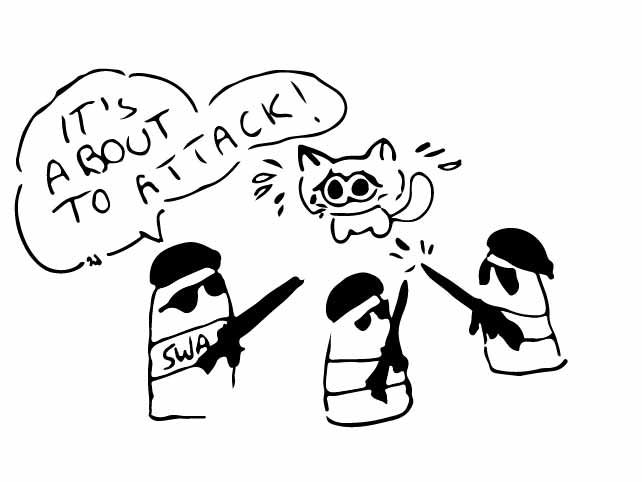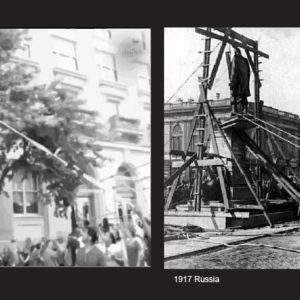
Just a few days ago Justine Damond, 40, called 911 when she heard a woman screaming in an alleyway. When she approached the police vehicle by her house, she was shot dead through the driver’s side window by cop Mohamed Noor.
The investigation is ongoing, but we do know that the same police officer that were supposed to help her instead killed her. So where is the Black Lives Matters crowd, railing against police brutality? Where is the Blue Lives Matter crowd, defending the cop, who “feared for his life” when confronted with a middle-aged white meditation instructor, who “posed a reasonable threat.”
That nobody is coming out in arms shows that the framing of this “debate” has been wrong for years. It was never actually “black lives” versus “blue lives.” If it were, how do you explain a black man killing a black cop? Or how do you explain this case, where a Somalian cop kills a white woman?
BLM always screamed that “systemic racism” was the root cause of police brutality, but even if it is a factor it is not the underlying cause—and pretending it is does not solve and even trivializes the scope of the problem. Anybody can be a victim—even if police brutality disproportionately affects blacks—and everybody should be afraid. The root of the problem is bad training and a philosophy that values the cop’s life more than the civilian’s.
What happens if you punch a cop? You automatically get a higher sentence than if you punch a civilian, just because your victim is a cop.
What happens if you jump and kill a civilian who reaches towards his waist because “he might have a gun”? You would need the best lawyer in town to prove beyond a reasonable doubt that your life was under imminent threat.
But if you’re a cop you can get away with this. Police officers shot Alton Sterling in Louisiana just because he had a gun in his pocket. Philando Castile died for no reason at a traffic stop. A seven-year-old girl died during a SWAT-team raid at the wrong apartment.
More than 1000 people were killed by police in 2015 (7% of all gun related deaths). At least 198 of them were unarmed. That year, 39 police officers were shot and killed. Policemen were charged in less than 1% of police shootings cases.
There is no denying that there is a problem.
What is the common factor in all these cases? Officers claimed that they feared for their lives or somebody did not comply with an order. Fear for your life from noncompliance, legitimate or not, becomes a legitimate reason to kill. What a terrible standard—what if someone is deaf? What if he does not speak English, or simply panics under gunpoint and does not understand what is going on? Apparently that is enough to justify murder. Even perfect calm, as we have seen on video with Philando Castille, is no antidote when there are panicking and trigger-happy cops.
Police rules are written under the wrong and anti-societal idea that the officers’ safety comes first, sometimes before the citizen’s safety, the constitution and the law. The USA is the only country (besides dictatorships) where police adopt this absurd idea. When there is a mild threat, police are quick to pull the trigger. And yet when there is real danger, police are slow to go in!
In the Binghamton shooting in 2009, the 9th worst mass shooting since ’84, the first police officer arrived at the scene less than three minutes after the first shot. This is impressive, but they didn’t actually go in. SWAT only entered the building 40 minutes after the last shot. How many wounded victims died bleeding? In this case, supposedly nobody, but there is no way to really know in this case or in similar cases.
When pressed, the police chief said that the information they were getting from the receptionist wasn’t certain enough to warrant caution. “He was dead. We didn’t know it,” said the police chief. “If there’s a bunch of cops laying on the floor shot trying to rescue somebody else, it’s not going to help anybody.” Why would the cops be laying dead? The whole point is that our massively militarized cops have weapons and defense gear and the civilians inside do not have anything at all. It seems like they prioritized police lives over hostage lives.
In the Orlando shooting of 2016, police officers stepped back not because they were wounded, but because the terrorist “overpowered” them. Then police negotiated for several hours. At least one hostage, an 18-year-old high school graduate bled to death during negotiations. She was shot in the arm. There may have been legitimate concerns about going in—perhaps the criminal had a bomb. But it is still strange—they spent hours “negotiating” with a guy who pled allegiance to ISIS. He was there to kill, so what was there to negotiate?
On the one hand, police use excessive force against small violators, panic, and escalate routine procedures into conflict and tragedy. On the other hand, they don’t step in when there is real danger.
Police stations have rules to protect officer safety. But these rules aren’t standardized–there are no national or even state standards for officer safety. Each police department has its own rules. This was not always the case; it is possible that police privileges increased in the ‘70s and ‘80s with the War on Drugs. Before this, police were not as militarized.
If we want to terminate police brutality, if we want to stop future murders, if we want to increase real police efficiency and public safety, we need to revise police training programs and rewrite the rules. So much of the current conversation has revolved around systemic racism, or “blue lives vs. black lives.” Barack Obama had blamed the current problems on racism and guns. He missed the point. People also say that we ask too much from officers, but this also misses the point; people are angry at the police because they do too much, too much violence against violators of non-violent crimes.
Yes, officer lives matter, and officers should not carelessly risk their lives, but the system needs to reflect that their duty is to protect the citizens first, and themselves second. They need to deescalate situations, not provoke them. And we do not need officers who are so terrified for their lives that they panic and shoot. Many officers are heroes who serve with integrity. The system needs to change to reflect these values or we will keep seeing bloodshed.




